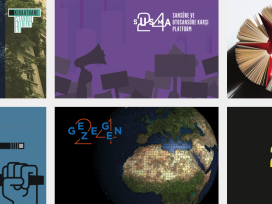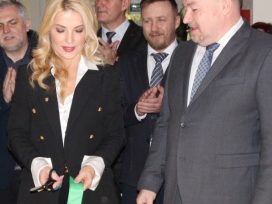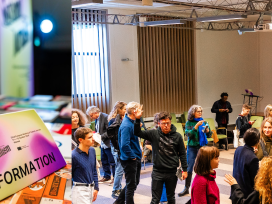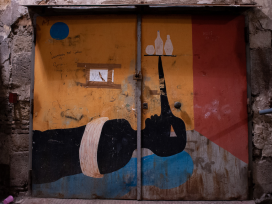‘Disinformation is most effective in a very narrow context,’ noted Frank Snepp thirty years ago, long before today’s debate on fake news and social media. Snepp was chief analyst for the CIA in Saigon during the Vietnam War and an expert on propaganda and information warfare; when he later described the methods and inner workings of the agency he became one of the first whistle blowers. You take a fraction of reality and isolate it from the rest, Snepp explained. What is said does not have to be totally at odds with the facts, it is about ‘shaving a piece of reality off’.
Such shaved-off, isolated pieces of reality are the staple of modern media consumption. While reality gets ever more complex, the frames of reference provided by the media get narrower with each click. What was once a common public sphere in which different perspectives clashed and supplemented each other has long been fragmented into cloistered bubbles of information, in which we are fed with what is already familiar, by algorithms knowing our preferences and efficiently protecting us from all that has a different taste.
This description is, on the one hand, obviously an idealization of a bygone era – exactly how inclusive and heterogeneous was that media community that Jürgen Habermas called the bourgeois public sphere? On the other hand, the description also demonizes the current setting – hasn’t the digital revolution, at least potentially, opened up whole new worlds of information that previously we could only dream of accessing? And yet, when the context disappears, the new reality-shavers not only make us easy prey for disinformation and demagogy, they at the same time undermine the democratic system as we know it. For what remains of democracy when the ideologies, experiences and worldviews between which it mediates never meet? What remains of society when the context is gone?
In a contextless media landscape, cultural journals represent the counter image, intractably insisting on complexity and interconnectivity; articles are placed side by side, juxtapositions are never random but always add meaning; one issue follows another in publishing projects spanning the art world and life world alike.
Journals create context on all levels, not by erasing differences but by providing space for them. Among many other things, a journal editor is also a composer, who in every issue distributes the elements in a way that makes writers’ contrary temperaments communicate, so that different subjects illuminate each other and opposing experiences are put in critical contrast.
This generic heterogeneity is also visible at the level of the individual text. The essay is the preferred genre of many cultural journals: formally open and permeable, the magazine essay is the exact opposite of a detached tweet, too long and winding for the short-spanned attention of social media and too exploratory for the opinion-driven forums.
However, if one had to pick just one feature to illustrate the urge of cultural journals to broaden the picture and widen the context, it would have to be its transnational stance. More than any other media, cultural journals spread political, philosophical, aesthetic and cultural ideas from language to language, both inside and outside cross-border publishing networks. And they have done so from the very first moment.
A circle of friends
Eurozine inscribes itself into this long history of transnational journal projects. It emerged from a series of meetings of cultural journals initiated in 1983 by the German radio journalist Hans-Götz Oxenius. These meetings brought together a cluster of European magazine editors, which over time became a circle of friends. Behind the initiative was no grand design, comparable to the project of the famously failed Revue Internationale in the 1960s; it was inspired by the simple idea to intensify exchange between national intellectual cultures – to widen the context.
In his recollection of the journals meetings, American writer George Blecher wrote: ‘Maybe what is most unusual of the group is that it endured at all. It never got a proper name or clear definition of purpose.’ In a letter written some twenty years later, Oxenius noted down some ‘unedited thoughts and memories’ of the first meetings:
My starting point was the observation that it was the journal editors that were the swiftest to inform about the intellectual, literary and political situation of a country … but that they did not know much about each other – not to speak of the East. Hence, with the help of some ‘experts’ (Corpet, Enzensberger etc.), I started to compile a list of interesting people/journals and then, in autumn 1983, invited them to Bossey, the conference venue of the World Council of Churches. One of the reasons I chose Switzerland was to make it more difficult for the East Europeans to decline.
From the start, Oxenius was convinced that it would be important to include editors from the other half of the divided Europe in his endeavour. Organizing the first meeting in 1983 in Switzerland, he believed, would make it easier for them to get permission to travel. He used Hungary as a test balloon and invited two journals, one official and one unofficial. Neither showed up.
The unofficial publication was Beszélő, the most important political journal of the Hungarian democratic opposition, published in samizdat from 1981 to 1989. Shortly before the meeting, its editor-in-chief, Ferenc Kőszeg, wrote to Oxenius, explaining that he wouldn’t be able to participate at the gathering in Bossey because the authorities were still holding on to his passport. He paints a fascinating portrait of his journal and its role in the ‘second public sphere’. Many, if not most, cultural journals have throughout history, and particularly since the 1960s, considered themselves to be part of a counterculture or Gegenöffentlichkeit, an alternative public sphere – and many still do. But behind the Iron Curtain in the 1980s this meant something very different. The irony in Kőszeg’s response to the subjects to be discussed at the meeting in Bossey in 1983 does nothing to warm the chilly reality of an editor in Budapest:
What could I talk about with people who discuss the role of electronics in editing or the relation of photography and graphics to text? Instead of indulging in noble musings about the intellectual preconditions of journal making, I am forced to think about ways of getting hold of paper – by bribing or stealing – to print the next issue … Apart from the decision whether to deal with concrete questions or rather to air ideas, we editors have to decide, on a daily basis, whether to hide the manuscript we are working on in the shoe cabinet or under the bed linen, in order to save it from the next house search. I appreciate that the question whether, and how far, the editor is allowed to interfere in the author’s sovereignty by suggesting changes concerning contents, structure or style is a burning issue and worthwhile discussing. For the editors of Beszelő, however, this question is made somewhat less pressing by the fact that most of its authors slide their contributions anonymously under the door and avoid any contact with the editorial office.
At that time, denying eastern European editors a visa for participating in cultural events in the West was the rule. The fall of the Wall changed that, but didn’t bring freedom of movement for everyone. Now it was the West that time and again denied visas to colleagues from less fortunate countries. At the journals meeting in Vilnius in 2009, we were reminded of Kőszeg’s story when red tape prevented the representative of Eurozine’s longstanding Turkish partner Varlık from participating in the conference, or even from entering Lithuania. Those who were once excluded had become excluders.
Divisions of the continent along different lines would become a constant issue in a network that defines Europe as a multifaceted yet common intellectual space, rather than as an entity confined by political and geographical borders.
After the inaugural convention of cultural journals in Bossey in 1983, the editors came together again in 1985 in Urbino, Italy, where the legacy of the Enlightenment was discussed and Antonín Liehm presented his newly founded journal Lettre international. But it was at the next meeting in Berlin, in March 1989, that, as Oxenius recalls, ‘the East entered for the first time, incarnated by two ladies from Moscow, representing journals whose print run exceeded what we, all-together, were publishing in the West.’ From then on, the ‘European Meetings of Cultural Journals’ were organized in cities across Europe on an annual basis.
With a few exceptions, the meetings were dedicated to specific themes reflecting the role of journals in various contexts: the relationship of cultural journals to other print media (Bossey 1983), their ‘mission’ as heirs of the enlightenment (Urbino 1985), exile journals (Budapest 1990, organized by a former member of Janós Kadár’s staff ‘like a UNESCO meeting’, according to Oxenius), and cultural journals as avant-garde of a European culture (Strasbourg 1991). After two meetings without specific topics, in Gothenburg (1992) and Brussels (1993), ‘Mediterranean identity’ was discussed in Lisbon (1994) and the role of cultural journals at the fin de siècle in Vienna (1995).
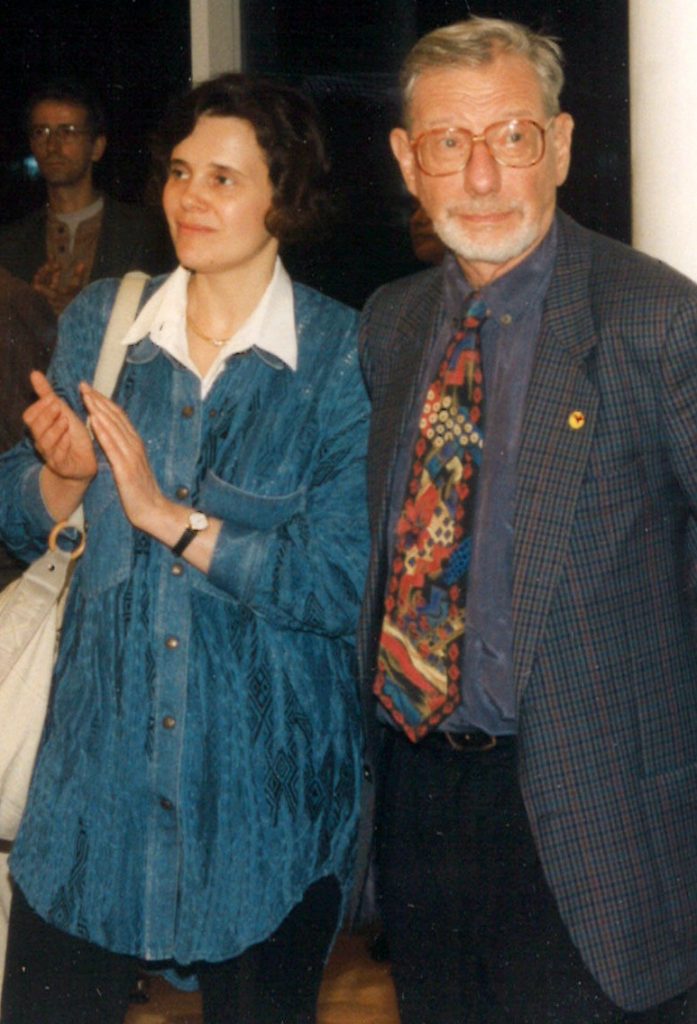
Irena Prokhorova and Hans-Götz Oxenius at the Vienna meeting in 1995.
In a report on the Lisbon meeting, Olivier Corpet, editor of La Revue des revues and a key member of the circle of friends from the beginning, looked back on the first decade of the journals gatherings: ‘These meetings have kept their original style of conviviality, generosity and climate of open discussion,’ he noted. They ‘work in a way like an ideal journal’, contributing ‘to the creation of a broad European network for reflection and exchange on (and for) journals’, thus helping them to be aware of their ‘central role in the resistance against the standardization and uncontrolled modernization of cultural practices and representations’.
A strange alliance
The Vienna gathering in 1995, organized by Wespennest and the newcomer Transit, was a turning point in the history of the journals meetings in two important respects. It resolved to open the door for journals from the former Soviet bloc and, for the first time, addressed the media revolution triggered by the internet. While the first day was dedicated to a rather conventional topic, the role of intellectuals, on the second day the editors focused on what was to become a recurrent concern: ‘Cultural journals and the new media’. The intense debate included the presentation of a survey made by David Applefield (Frank, Paris) on journal editors’ relationship to the new technology, as well as a talk on ‘ADILKNO: Advancement of illegal knowledge’ by Lex Wouterloot (Agentur Bilwet, Amsterdam). The Vienna meeting also resulted in the first collective publication of the network, the legendary ‘Red issue’, which included Applefield’s prophetic contribution ‘fan duh see-ek’luh: From Vienna to the Web’.
‘For many, the conference served as an introduction to the new media, and as a result the discussions covered both practical and philosophical issues’, noted Jack Weinstein in a report on the conference. For publishers from central and eastern Europe, the hypertextuality inherent in the new technology contained a strong subversive potential. ‘For individuals who were forced to publish under repressive regimes, this “paperless publishing” not only represents liberation from investment capital … but also from state control.’ A major concern was quality, noted Weinstein: ‘When published on the World Wide Web, cultural journals – which often see themselves as purveyors of ‘High Culture’ – risk being lost among the millions of other newsletters, magazines, homepages and commercial enterprises, many of which (some would argue) have little or no intellectual value.’
The German writer and network member Lothar Baier was sceptical about the hopes projected onto the internet. In a letter preceding the meeting he wrote:
I have nothing against discussing the new media with regard to journals, but I don’t think one should overestimate their impact. I might be one of only a few participants of the meeting who not only is connected to the internet (bai@lb.rhein-main.de) but has some experience with it, given that I taught at a Canadian university with 10,000 internet accounts. According to my observations, the internet plays an important role in the hard sciences, but its role in the soft sciences seems rather limited. I haven’t met one person at this technically advanced university who would have read one single journal article … on a computer screen.
Baier was far from being the only one in the informal network who was sceptical about the potential of the new technology. In fact, this was to become a divisive issue in the years to come and presented a major challenge to the cohesion of the circle of friends. In combination with the increasing difficulty of funding the annual meetings, the networking potential of digital media pushed the group in the direction of de-informalization and more sustainable cooperation.
In Copenhagen the following year, there was a first embryonic presentation of a potential internet project, a regular joint publication called the ‘Euro’ (one needs to recall that at the time, the common European currency went under the name Ecu). However, the main topic was ‘multiculturalism in contemporary Europe’. Instead, it was the Moscow meeting in 1997 that really continued the debate begun in Vienna and that focused fully on the historical caesura in the media landscape – the advent of the World Wide Web. This time, the Web was discussed not as a general phenomenon but as a practical tool for the journals network itself. Convinced that, with the WWW, a new constellation had emerged that represented both a challenge and a chance for cultural journals, the authors of the present article came down on the side of development and renewal: together with Walter Famler (Wespennest), Klaus Nellen (Transit) presented the concept of Eurozine for the first time, seconded by a speech on ‘World brains and super-encyclopedias’ by Carl Henrik Fredriksson, at the time editor-in-chief of the Swedish journal Ord&Bild.
In his history of Lettre internationale, Roman Léandre Schmidt underlines the importance of kairos – the ‘right moment’ – in journalism. This was certainly true for the idea of Eurozine, which was, and still is, to seize the opportunities offered by the new technology to strengthen the old medium of cultural journals in Europe, and their fragile and somewhat erratic community.
The Eurozine concept could, its inventors claimed in Moscow, endow the existing informal journals network with both sustainability and a mission. However, the idea was far from uncontroversial. The subsequent debate was as fierce as it was chaotic. Comments were to be made in either English or Russian, and the sole interpreter was visibly challenged as he tried to keep up with the speed of the participants, spitting out consecutive translations back and forth. When Olivier Corpet, the most vocal of the critics, insisted on his right to deliver his attack on the superficiality of everything digital in French, panic showed in the poor translator’s eyes. Yet, he somehow manged to deliver a bilingual summary of Corpet’s critique: the internet is nothing but a resort for pornography and short snippets of information, and has nothing to do with the proud tradition of printed intellectual journals.
In the end, most editors present either sided with Corpet or remained uncommitted. Those who showed a positive interest in the concept that had been presented could be counted on the fingers of one hand.
Afterwards, Walter Famler and Klaus Nellen formulated their proposal in a more systematic way and, in December 1997, submitted what can be called the Eurozine manifesto to the inner circle of the circle of friends, who were organizing the upcoming meeting in Caen.
The strategy proposed in the manifesto was an ‘alliance between an old and a new medium’:
The type of journals addressed here is a medium which, like only a few others, embodies Europe’s cultural self-image. At present, however, it is an endangered species, because of exposure to increasing economic pressure and growing competition from other media. Paradoxically, it is precisely the new medium of the internet which is destined to compensate for the specific weaknesses to which cultural magazines are notoriously prone.
Whenever European culture is discussed today, its diversity is evoked with euphoria … what is left unmentioned, is that diversity also means many small markets and many barriers, linguistic as well as economic. If one really wants to defend European diversity and not sacrifice it for a uniform global culture, then special efforts are required in order to facilitate and intensify the work of translation between cultures as it is carried on by cultural journals.
This is where the internet can make a decisive contribution. Pessimists regard it the spearhead of cultural globalization. What they overlook is that it is simultaneously a medium which allows minority groups, among them the diaspora of cultural journals, to concentrate their strengths to oppose this trend.
Eurozine was conceived as ‘a virtual cultural magazine which wants to use the new possibilities provided by the World Wide Web to link up existing European cultural journals more effectively and to amplify their international public presence’. In this way, the manifesto continued, Eurozine would serve a double purpose: on the one hand, to facilitate communication and exchange between the periodicals involved, thus providing a Europe-wide overview of topical themes and discussions; on the other hand, to offer information that was normally not easily accessible to an international readership. Finally, Eurozine would aim to become a journal in its own right – a ‘cultural magazine of a new type’.
This programmatic text was put on the agenda of the journals meeting 1998, organized by Olivier Corpet and his Revue des Revues in the Abbaye d’Ardenne near Caen, a congenial site which houses the Institut Mémoires de l’édition contemporaine (IMEC). The second day was devoted to the question ‘From meetings to networks: Do we weed an internationale of journals?’. This thematized the transition from the existing informal series of annual meetings to its institutionalisation as a European network. Once again, the question ‘Is the internet a new challenge or a serious threat for journals?’ (Corpet) was passionately discussed.
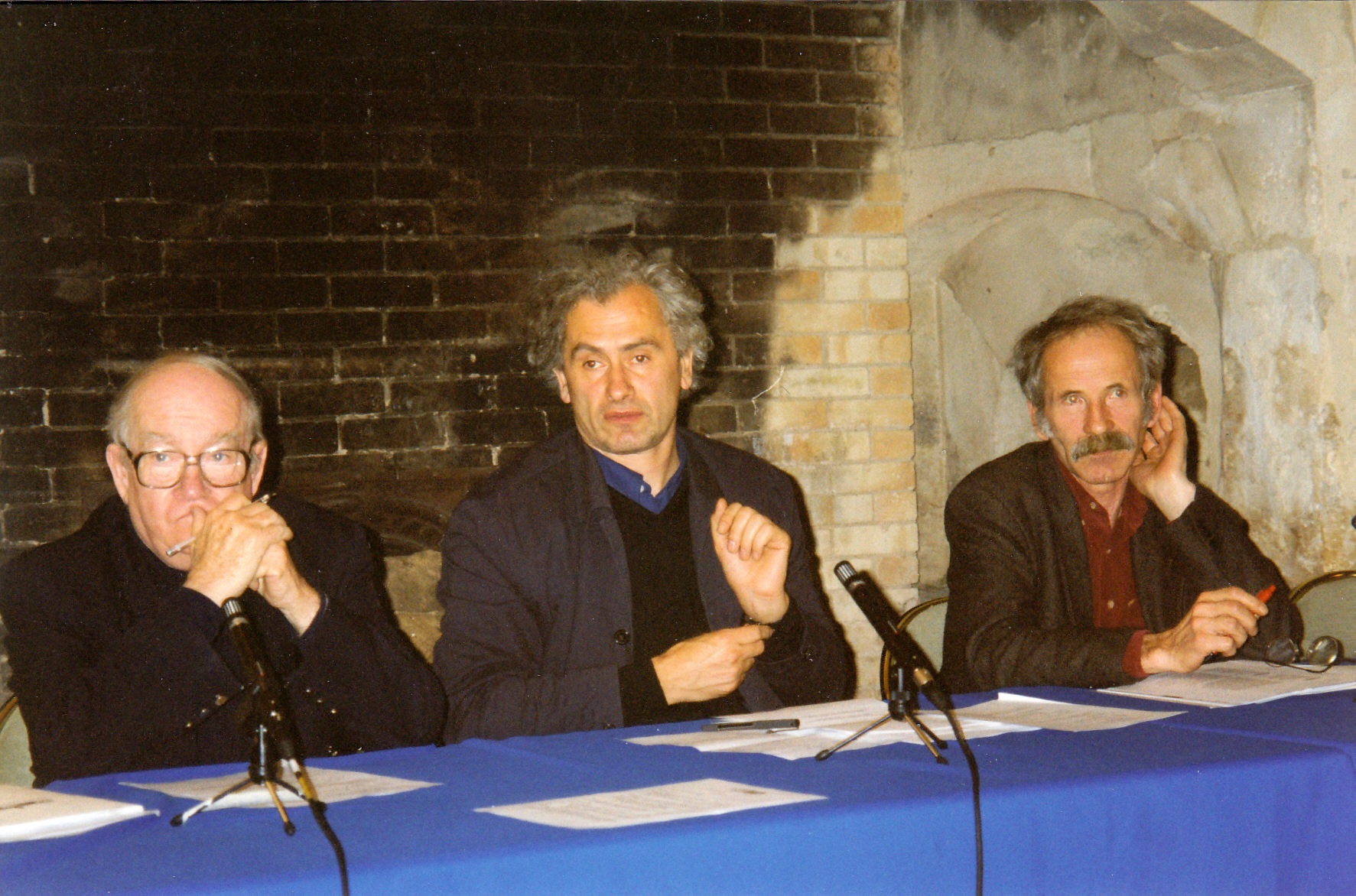
John Calder, Olivier Corpet and Lothar Baier at the Caen meeting in 1998.
That same year, the concept was finally implemented: Eurozine was registered in Vienna as a non-profit association and a website was created, which went online in December 1998. The founding partner magazines were Mittelweg 36 (Hamburg), Ord&Bild (Gothenburg) and Transit and Wespennest (Vienna). Shortly afterwards, they were joined by Kritika & Kontext (Bratislava) and Revista Crítica de Ciências Sociais (Coimbra).
The next journals meeting took place in Lipica, Slovenia, in September 1999, in parallel to the Vilenica International Literary Festival. From the point of view of intellectual content and structured debate, it can’t be described as anything but a failure, demonstrating that the informal circle of friends had lost its momentum and was falling apart. Olivier Corpet cancelled his participation ahead of the meeting, faulting the lack of collective efforts in the organization of the programme. The failure to include the whole ‘Central Committee’ (an ironic reference to the inner circle of the network) in the preparation had resulted in the journals meeting being consumed by the larger literary event, noted Corpet. In a fax he wrote:
As a bit of a provocation, I had suggested at the Lisbon meeting that we might discontinue our conventions with the year 2000… Today I ask myself if we shouldn’t have taken this decision during our previous meeting in Caen… In any case, I think that if we want to continue, for the 14th gathering we have to be more vigilant, more collective and more inventive.
Towards a European public sphere
This was indeed a critical moment: either the network would be reinvented or it would die. In the end it was the foundation of Eurozine that not only gave it a second life but enabled it to grow. The gathering in 2000 was prepared by the same group that, the year before, had successfully started inviting old and new partners to formally join what was to become the Eurozine network, and to contribute articles to its website. Under the heading ‘Politics and cultures in Europe: New visions, new divisions’, the conference was planned to take place in Vienna. This, however, became increasingly problematic, as the Austrian People’s Party in February formed a government coalition with Jörg Haider’s Freedom Party, which prompted the fourteen other EU member states to impose diplomatic sanctions on Austria, supported by a number of our colleagues. The solution was to organize the meeting in two cities: the event was opened in Vienna, where the Swedish newspaperman Arne Ruth delivered Slavenka Drakulic’s keynote speech ‘Who is afraid of Europe? Between xenophobic populism and multicultural citizenship’. (Rapidly translated and published in over ten countries, this text showed the potential of the new network idea.) The next day, the editors moved across the border to Bratislava, where the conference continued, hosted by Kritika & Kontext.
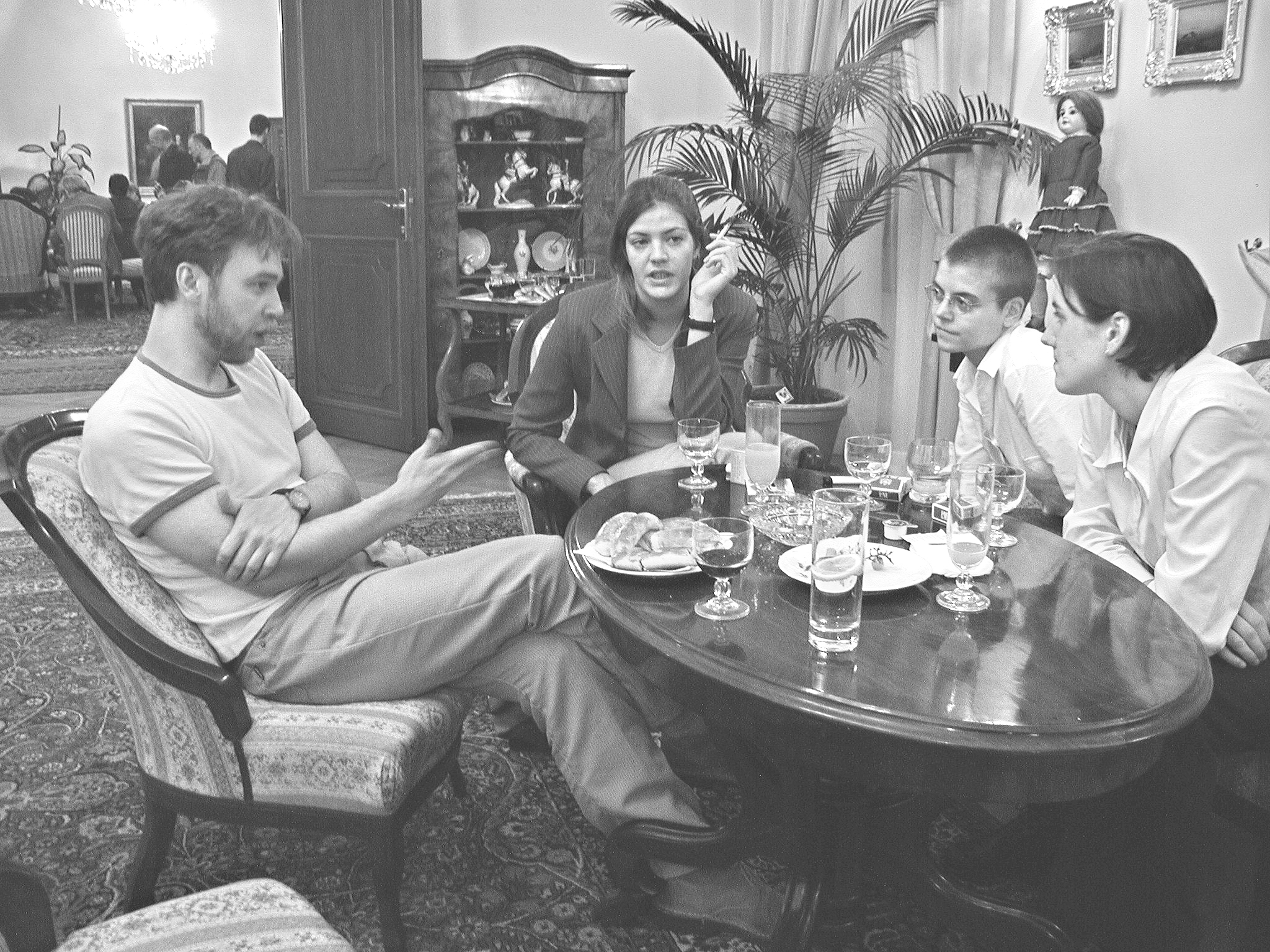
Carl Henrik Fredriksson, Julia Rüdiger, Cornelia Nalepka and Nadezda Kinsky at the Bratislava meeting in 2000.
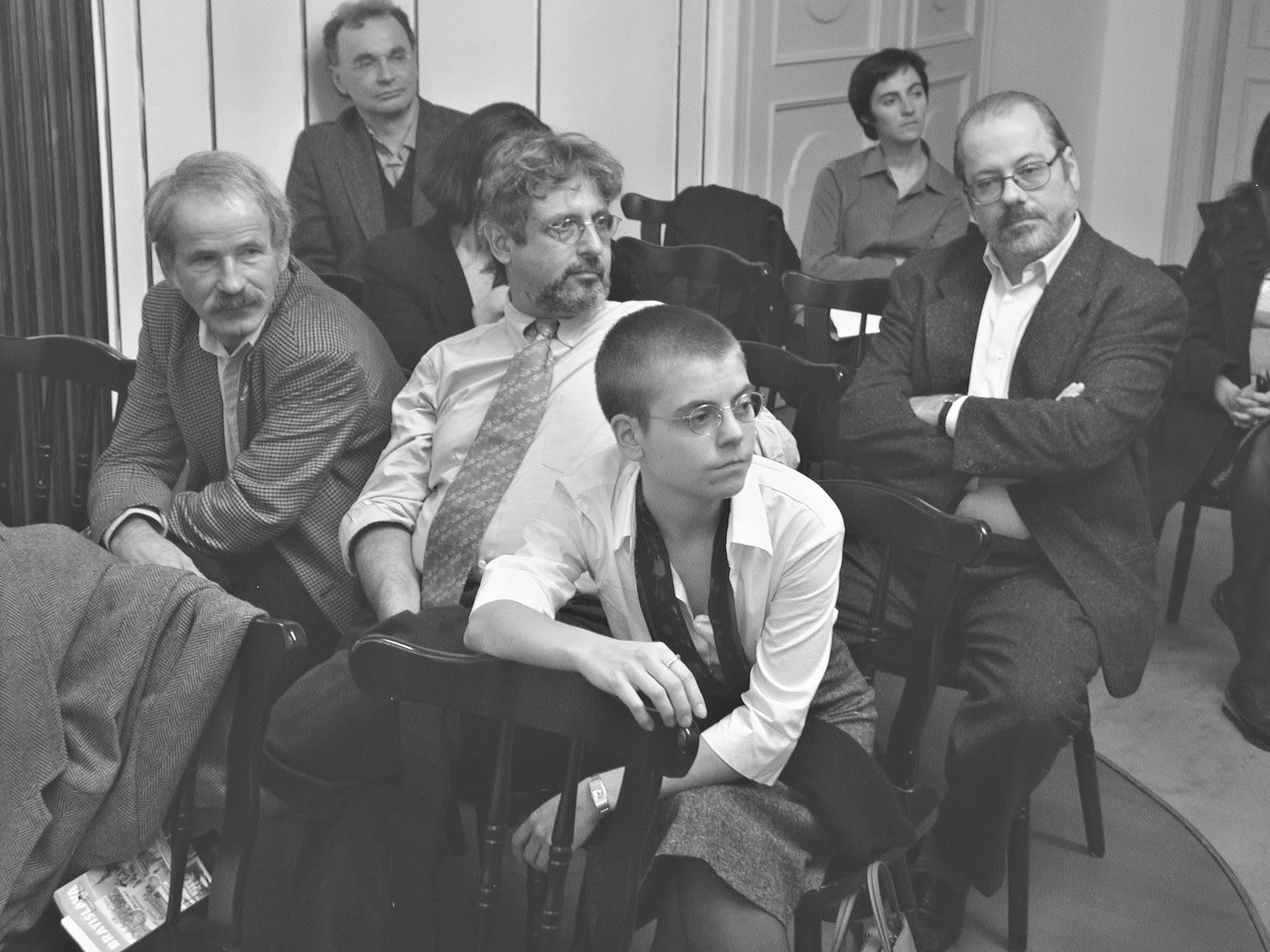
Bratislava 2000. Left to right: Lothar Baier, Klaus Nellen, Gaby Zipfel (hidden), George Blecher, Cornelia Nalepka, António Sousa Ribeiro.
At the time, Eurozine was governed by a collective consisting of the editors of the founding journals: Walter Famler and Andrea Zederbauer from Wespennest, Gaby Zipfel from Mittelweg 36, Samuel Abrahám from Kritika & Kontext, António Sousa Ribeiro from Revista Crítica de Ciências Sociais, and the two authors of the present article from Transit and Ord&Bild. The office in Vienna was run by three young women, Nadezda Kinsky, Cornelia Nalepka and Julia Rüdiger, who also presented the practicalities of Eurozine partnership in the conference room of Hotel Sorea in Bratislava. Much of what they described then is still part of the network practice today. Each partner journal, they explained, would get its own section on the Eurozine website, where it could present itself and provide information about current issues. The partners were also invited to contribute articles, which, if accepted, would be translated and republished in Eurozine – and eventually picked up by other journals in the network. In this way, the articles would be placed in a wider, European or global context and could potentially reach a broad international readership. At the same time, Eurozine would itself commission or acquire articles and make them available to the partners.
To most of the editors at meeting in Vienna and Bratislava, it was obvious that this new network concept was the way forward. In the following months, more and more journals signed up for partnership. Many of them still lacked their own websites, and the partner sections at Eurozine were their gateway to the digital publishing world.
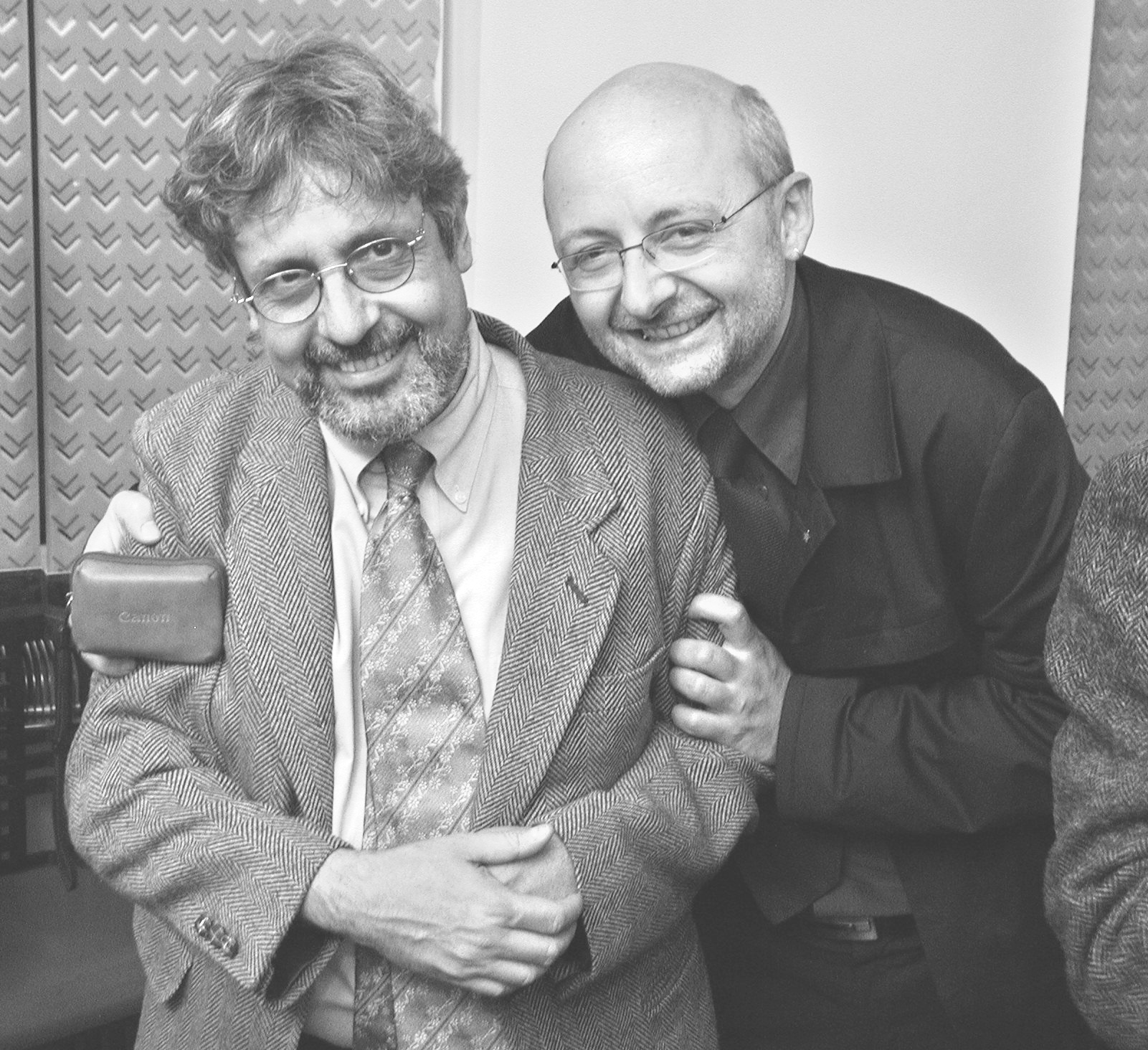
George Blecher and Walter Famler at the Bratislava meeting in 2000.
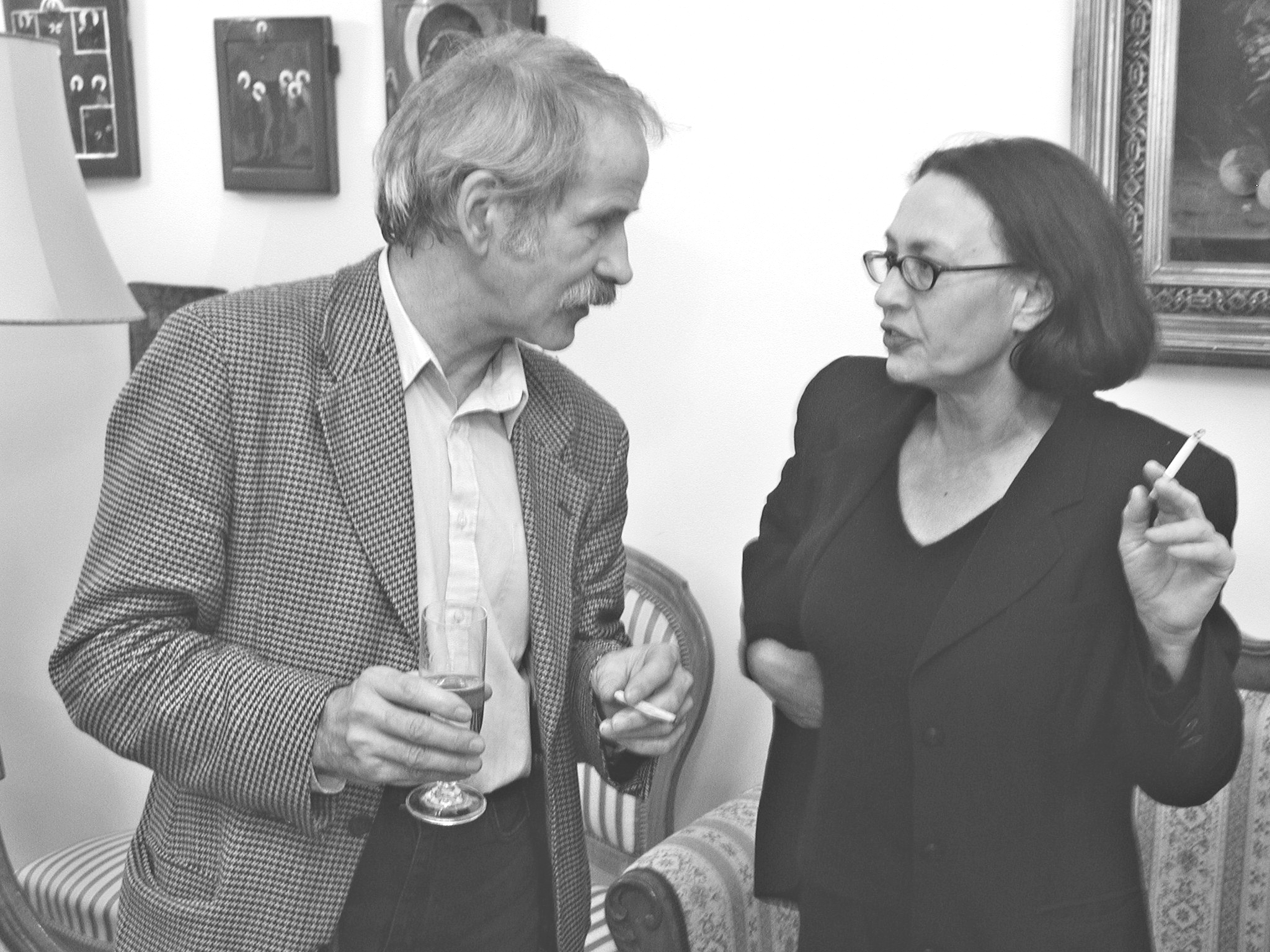
Lothar Baier and Gaby Zipfel at the Bratislava meeting in 2000.
But even though the number of partners steadily increased, and the establishment of a both virtual and real network centre in Vienna greatly facilitated cooperation between the annual meetings, there were problems arising from the new constellation, especially regarding Eurozine’s ambitions as a transnational media outlet. All the members of the editorial board were editors of printed journals (Eurozine was conceived as a network of print media) and were applying the logic of their own publications to the collective editorial work in the network. The articles were published by the staff in Vienna, which at the same time lacked any authority to take decisions. This meant that each article had to be discussed and approved by everyone in the editorial board before being cleared for publication, which led not only to clashes between incompatible editorial policies, but above all to an extremely slow publication process. At times, the consequences of this practice were painfully visible – for example, when George Blecher’s article ‘Why the US presidential campaign is so boring’ was featured prominently on the Eurozine website and projected onto a big screen throughout the conference in Vienna and Bratislava – while the whole world watched in awe as the US election drama ended in a 5–4 vote in the Supreme Court, making George W. Bush the new president.
Under such conditions, it was clear that Eurozine could never live up to its stated objectives. An email exchange between the members of the editorial board in 2001 illustrates both the problems and awareness of them. Two months into the new year, the following proposal can’t be read as anything else than a polite understatement: ‘In 2001, only 2 new articles have been published (plus one additional translation), perhaps we should proceed in a somewhat more pragmatic way in order to speed things up a bit.’ Even though measures were taken – for example, the editors agreed on a division of labour based on geographical and linguistic criteria – it was only when Eurozine got an editor-in-chief of its own in summer 2001 that it could finally start realizing its potential. The editorial board would continue to play a pivotal role in the development of the project, but from then on, the office in Vienna functioned as a proper editorial office.
The endeavour quickly flourished, both by drawing on the sources provided by a growing number of international partners – in 2008 the network comprised over 75 partner journals published in 34 countries and 32 languages – and by gaining a reputation as a truly European magazine in its own right. Finding a balance between the network and the publication, however, has been a constant challenge throughout Eurozine’s history. This is in the very nature of the enterprise: a pan-European network of cultural journals will necessarily be a heterogeneous bundle of genres and thematic interests, political and ideological positions, publishing traditions, economic circumstances, etc. Retaining an editorial backbone and setting an agenda relevant for readers all over Europe – and beyond – while not imposing a single perspective on this multifaceted corpus is a narrow tightrope walk.
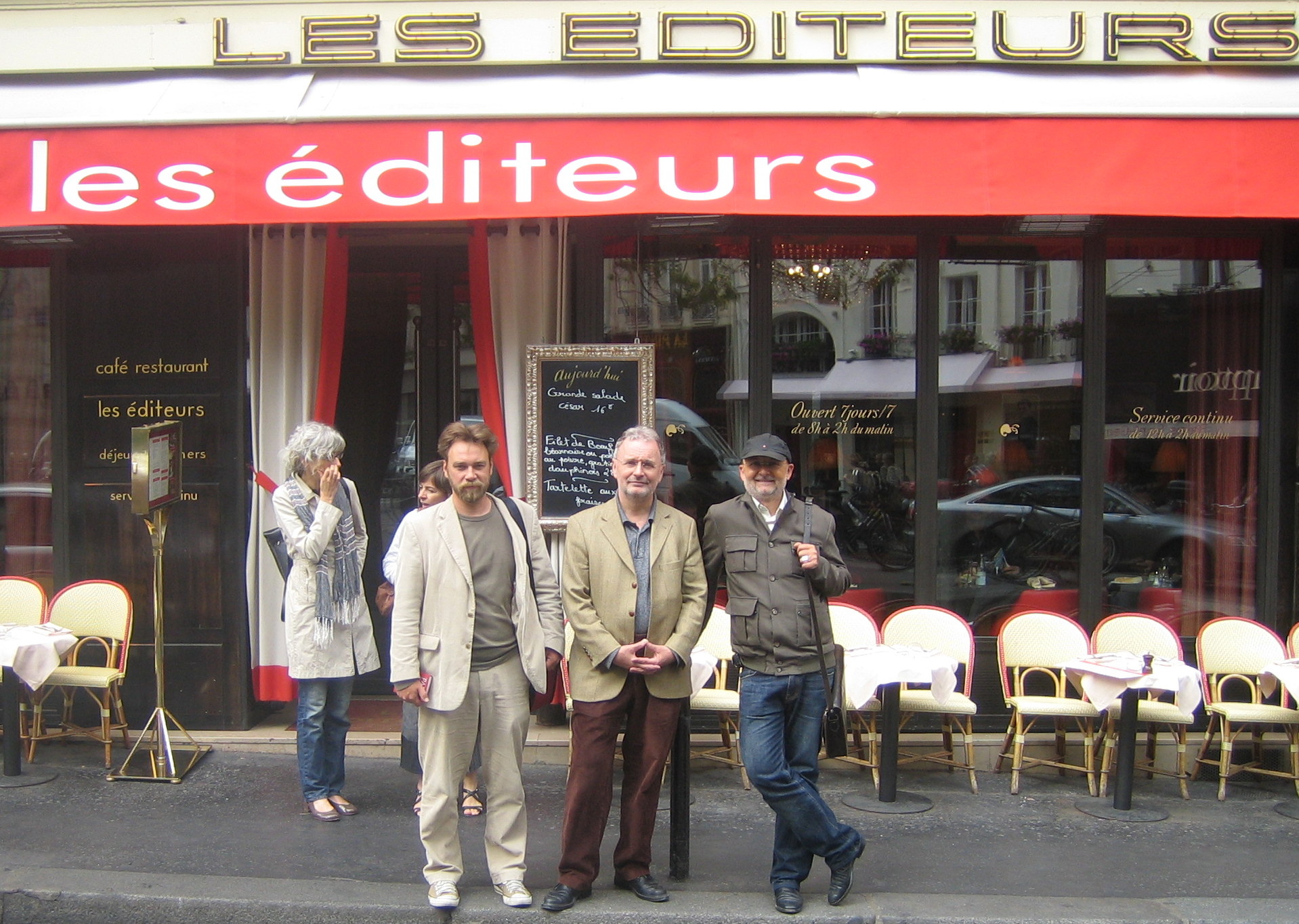
Carl Henrik Fredriksson, Klaus Nellen and Walter Famler in Paris, taking time out from the meeting in 2008.
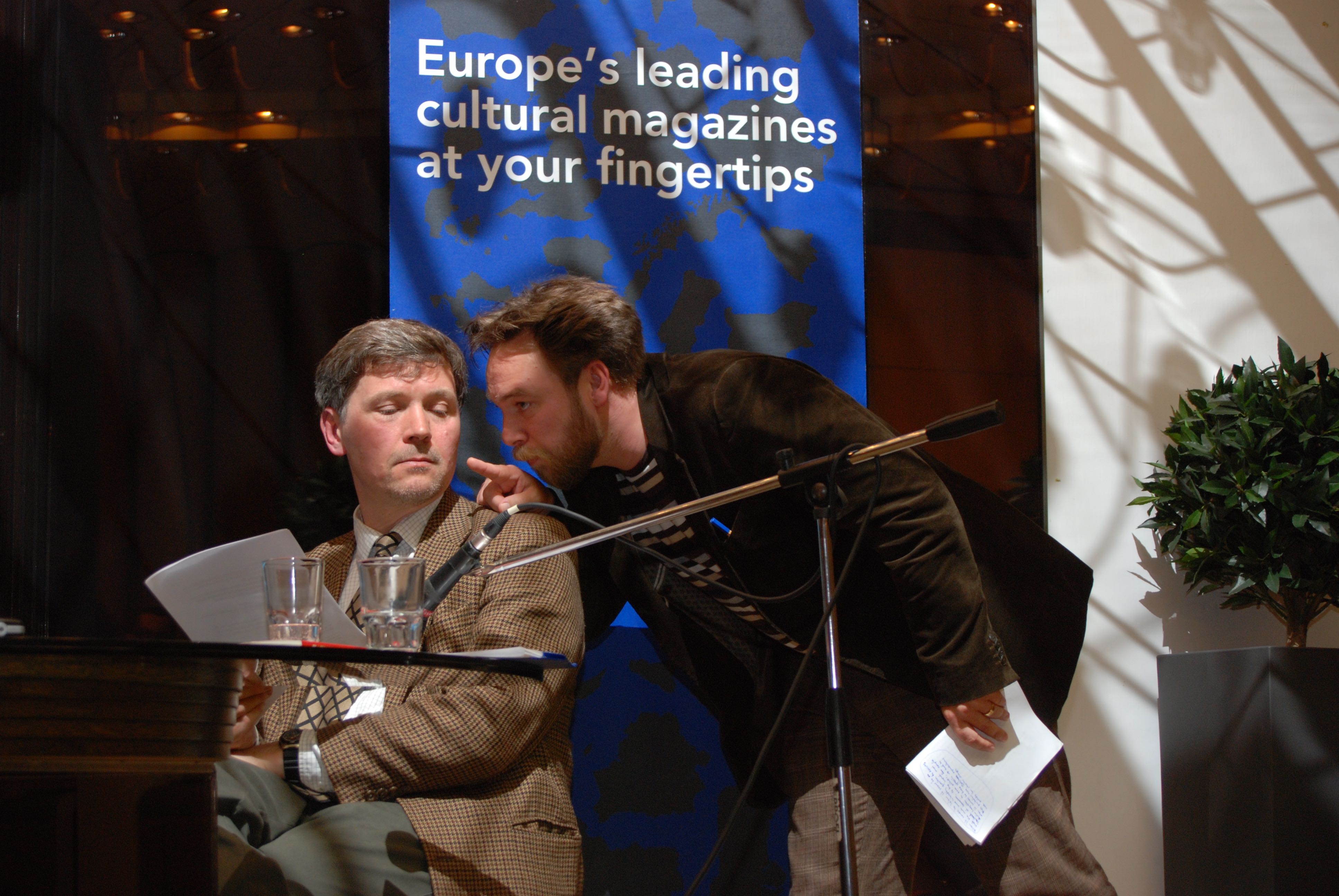
Samuel Abraham and Carl Henrik Fredriksson at a debate in Eurozine’s ‘Europe talks to Europe’ series, Bratislava 2010.
From now on, the focus was on mastering this balancing act. Eurozine’s role as a catalyst in the formation of a European public sphere worthy of its name became the object of continuous self-reflection. At the annual meeting in Tallinn in 2004, the whole network was invited to deliberate on the role of journals in a transnational media space. Under the heading ‘The Republic of Letters? Cultural journals in a European public space’, the conference aimed to ‘make visible the historic roots of both pan-European intellectual networks and cultural journals, and at the same time connect past, present and future’.
The meeting was hosted by the Estonian partner Vikerkaar, one of those journals whose print-run during Soviet times was considerably higher than any similar publications in the West, but that had now become a ‘normal’ European magazine and whose editor-in-chief, Märt Väljataga, also became a member of the Eurozine editorial board.
The conference, which took place two weeks after Estonia and nine other countries had joined the European Union, the first enlargement to the East that had long had a place in the Eurozine network, the conference contextualized both the European debate and the debate about Europe: ‘Today,’ the organizers wrote in the letter of invitation,
the European integration project has made the discussion about transnational spaces for cultural and political debate acute. Can there be a common Europe without a pan-European public sphere, where potentially common values and ideas can be formed, formulated and re-formulated, and transnational political institutions can find their legitimacy? … In this context, the lack of a European public space is manifest. Not so long ago, Timothy Garton Ash confessed that if he wants to reach ‘the widest European intellectual audience, the best way is to write an essay in the New York Review of Books.’ Is this the only option?
Obviously, this was a rhetorical question. There were other options and Eurozine was one of them. Now Oxenius’s pragmatic widening of the communication context was paired with the political idea of a transnational media sphere. Eurozine was no longer just a technical instrument, it had developed into an intellectual project and the pre-figuration of a political utopia.
The concept of the Tallinn conference drew heavily on an article published ahead of the meeting, in which cultural journals are described as approximating the ideal of a European public sphere more than any other media. The larger outlets are called upon to open up and define their journalistic responsibilities in the light of the new social conditions:
Instead of regarding their little siblings, i.e. the journals, with an odd mixture of envy (format and prestige) and disdain (circulation and impact), the national newspapers throughout Europe might take the initiative for a collaborative effort that would begin opening the gates to a wider world.
In Tallinn, discussions about one such ‘collaborative effort’ commenced – between Eurozine and the global media organization Project Syndicate, whose director Andrzej Rapaczynski attended the conference. Unfortunately, a joint venture never came to pass, mainly because of the two organizations’ diverging concepts of ‘culture’: on the one hand, Eurozine’s inclusive idea, covering everything from politics and social issues to experiments in concrete poetry, on the other, Project Syndicate’s wish to ‘cover’ conventional, mainly mainstream cultural products: art exhibitions, books, films.
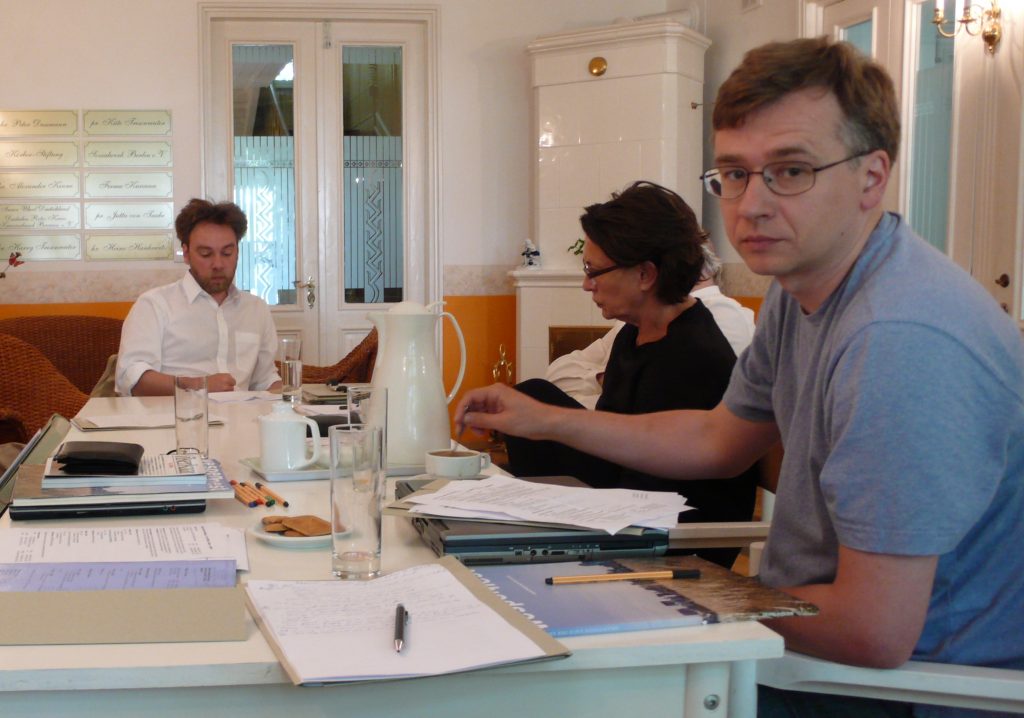
Carl Henrik Fredriksson, Gaby Zipfel and Märt Väljataga during an editorial board meeting in Tallinn, 2008.
Yet, since then, Eurozine’s self-definition as an organization committed to the ideal of a common transnational space for intellectual exchange has resulted in numerous publications and has also been used as a basis for fundraising. In connection with the journals meeting in Oslo in 2013, a group of people affiliated with the network described the contribution of journals to the creation of a European public sphere, and thus of a European community beyond radical nationalisms, as ‘irreplaceable’:
Journals are building a new kind of European discourse: not an abstract way of discussing ideas, cut off from any country and exclusively devoted to international issues, but a conversation deeply rooted in local peculiarities and problems, composed of echoes and translations, where people read one another’s texts and question one another’s beliefs. This original work is made possible by small organizational structures relying on a common language as well as on translation. It is done by people who write but also meet with each other, blurring the boundaries between genres and disciplines, moving from art to activism to academic research, and vice versa.
Since the eighteenth century, they concluded, again referring to the origins in the Enlightenment, journals have ‘ensured a circulation of texts and ideas that is indispensable to any society that puts stock in the democratic and cosmopolitan spirit’.
The article was written ahead of the European elections 2014. Already then, the European project was in deep crisis – not only an economic crisis, as the authors noted, but ‘a crisis of democracy, characterized by the rise of populism and a surge in “anti-politics”’. Today, ahead of the European Parliament elections 2019, that crisis is no less grave. On the contrary.
A project still in the making
Eurozine was built on the hopes for a Europe finally reunited after the fall of the Berlin Wall. What has become of this optimism?
Just as, back then, we like many others were filled with the sense of a new beginning, so today we feel as though something is coming to an end; just as, back then, we experienced a revolution for freedom in eastern central Europe, even if it was just to catch up with the West, so today we are confronted with a revolution against western values. On 28 July 2018, Viktor Orbán closed his speech at the 29th Bálványos Summer Open University with the words: ‘Thirty years ago we thought that Europe was our future. Today we believe that we are Europe’s future. Go for it!’
One might think that almost thirty years would have been enough to overcome the old divides. But the opposite seems true. Yes, thanks to EU enlargement, Europe has come closer together. However, the integration process has itself given rise to new forces, and revived some old ones, that are causing the East-West divide – long thought obsolete – to return. In addition, there is the widening gulf between North and South. Europe today is torn in many directions.
These disturbing developments are not restricted to Europe, however. What we are observing today is the global rise of illiberalism and, with it, the decline of the very values on which democratic societies are built. One of these is a central element of the Fourth Estate: the commitment to truth. Eurozine recently launched the focal point, ‘Disinformation and democracy’, related to the topic of the 2017 journals meeting in Tartu. The articles published in it can be read as an antidote to the proclamation of ‘post-truth’ as the new paradigm of our times.
More than any other medium, cultural magazines show that the way we perceive the world is determined by the context. In fact, that context is reality – the whole reality, not just the shaved-off, isolated part. You could call it education, or, even better, enlightenment – that process in which the context widens and the world grows bigger. It is also a great vaccine against disinformation, at least if we are to believe the retired CIA agent Frank Snepp.
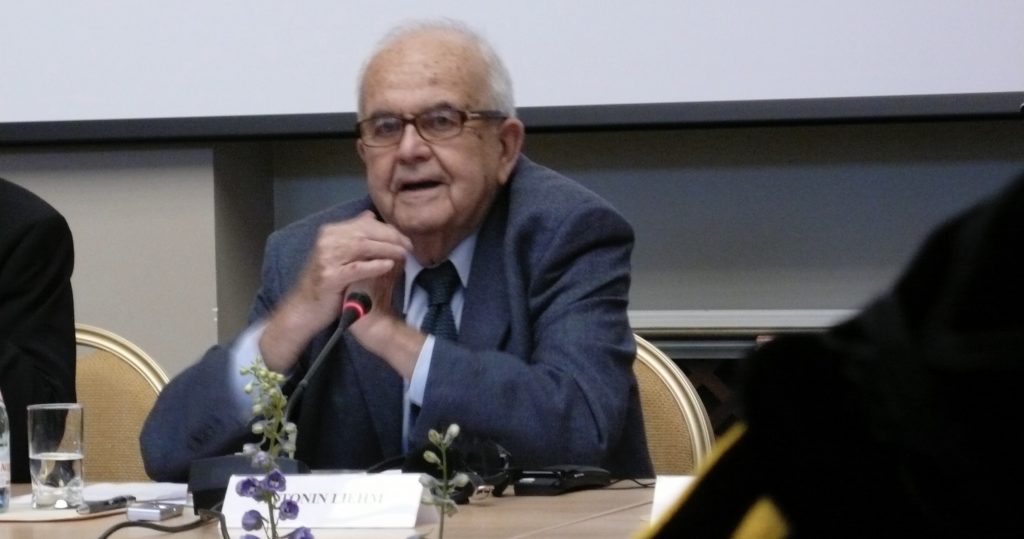
Lettre internationale founder Antonín Liehm giving the keynote speech at the Vilnius meeting in 2009.
So, in this broad context, what is it that makes Eurozine special? Well, for one, that it has ‘endured at all’. The initiators of Revue Internationale dreamed of a heroic intellectual subject, a confraternity of writers creating a transnational discourse – and failed. Some twenty years later, in 1984, Antonín Liehm successfully founded a European network of journals, Lettre internationale, which at its peak had twelve national editions. Not even ten years later, in 1993, the French mother journal ceased publication, followed by other editions. What started as a collective enterprise ended in the classical form of stand-alone journals, with the German edition of Lettre as the most remarkable Kulturzeitschrift published in the German language.
In contrast, by combining a network of existing, independent cultural journals with an organically connected ‘meta-journal’, Eurozine has created a new type of transnational collective subject – an open forum speaking in many voices. In a situation which is serious but not yet hopeless, these voices are more important than ever. However, thirty-five years after the first journals meeting and after twenty years of Eurozine proper, this endeavour is still utopian – it remains a project in the making, permanently to be reinvented, incurably incomplete and prone to failure.
Vienna, August 2018
